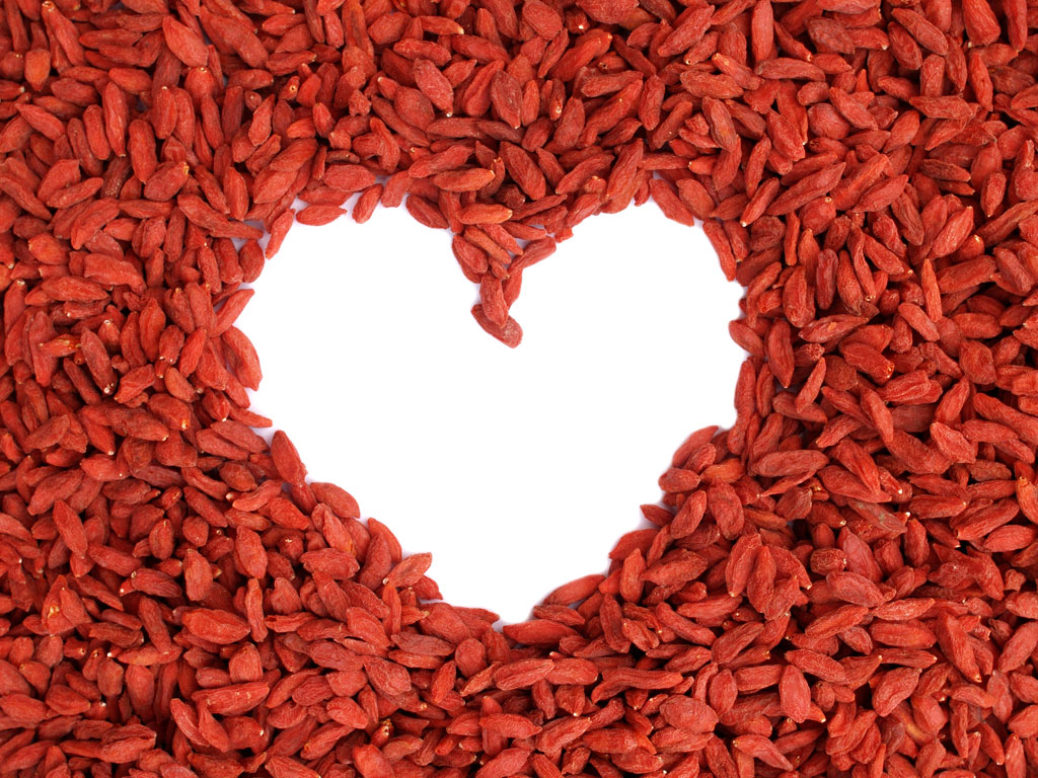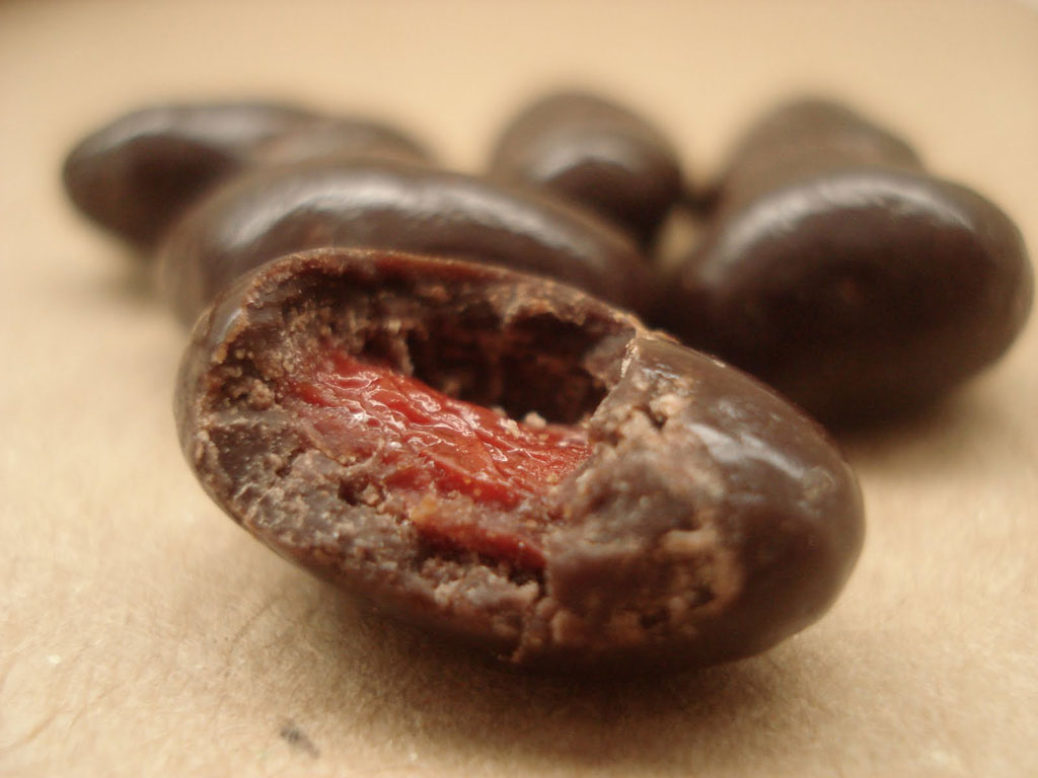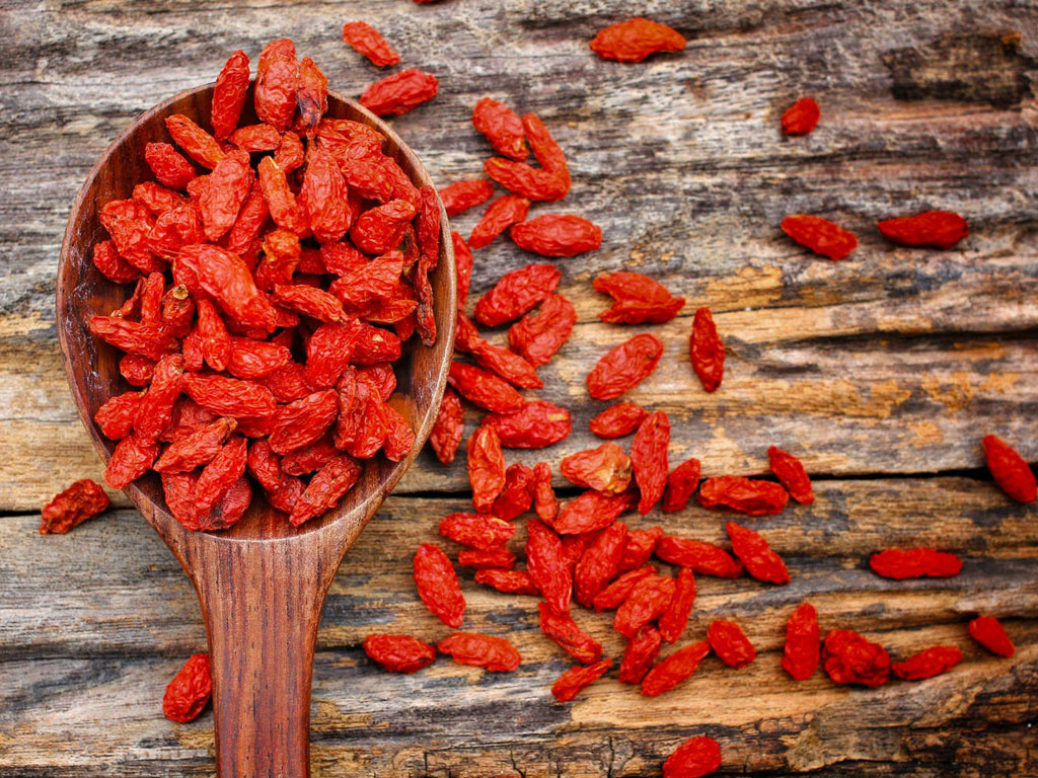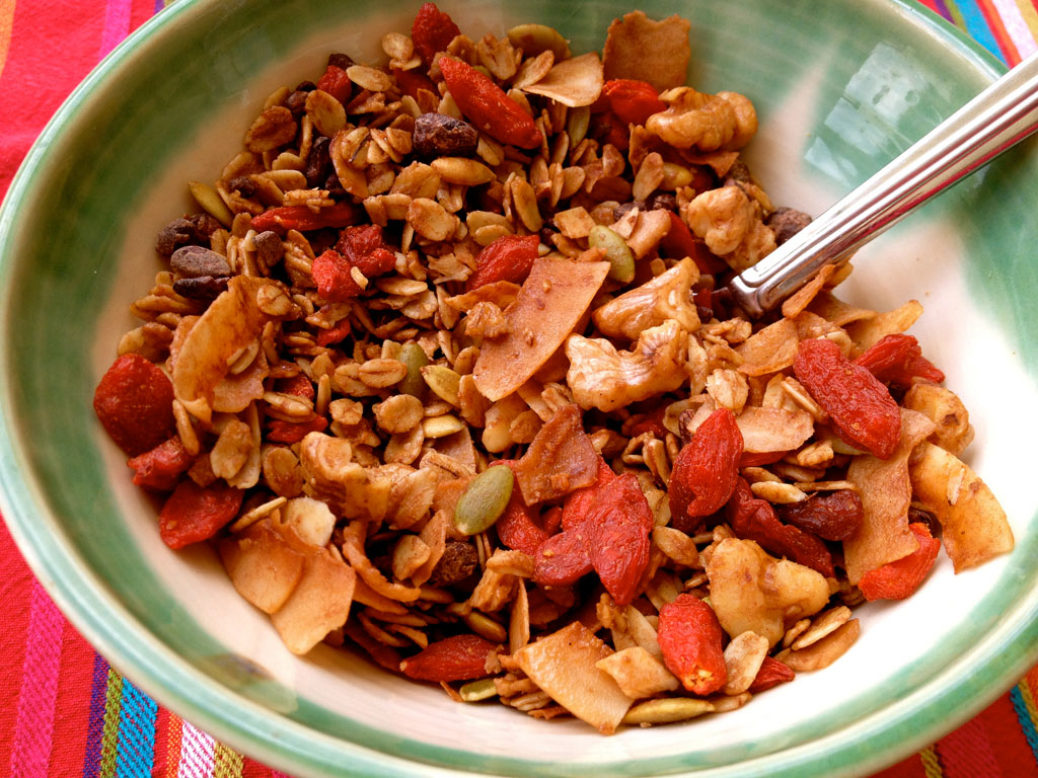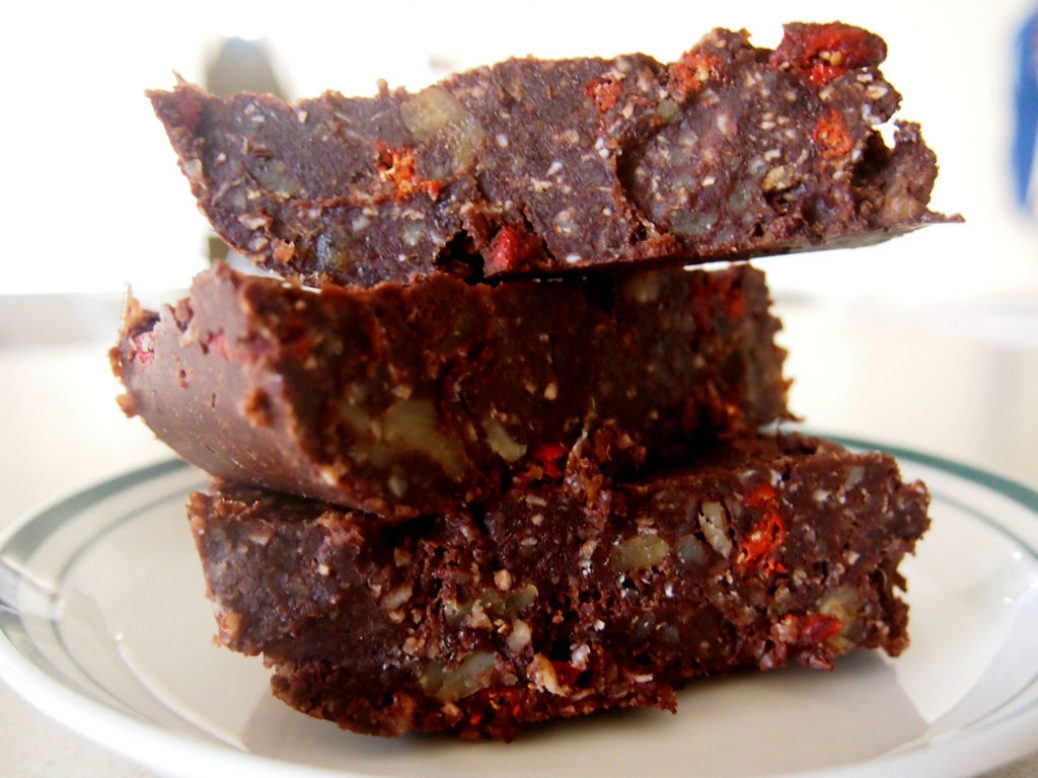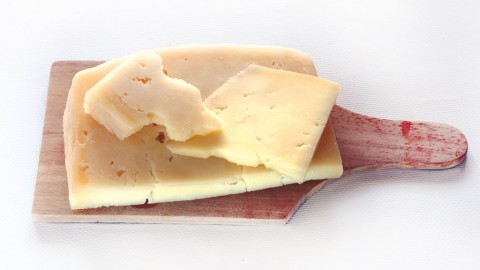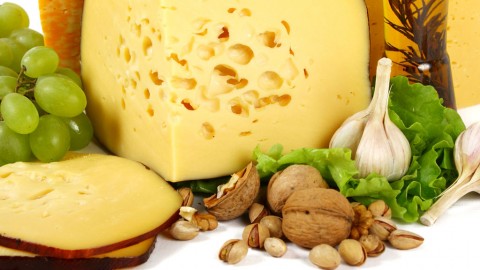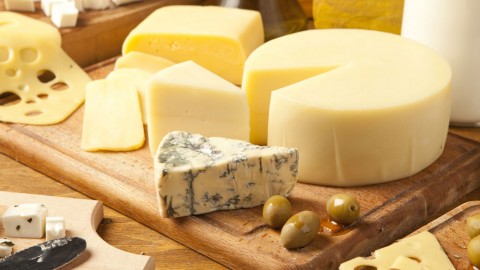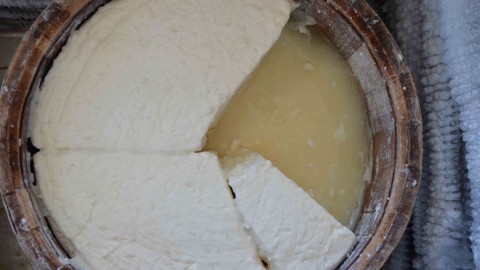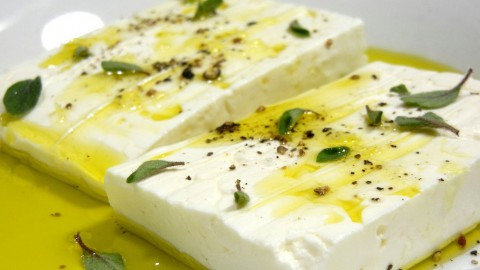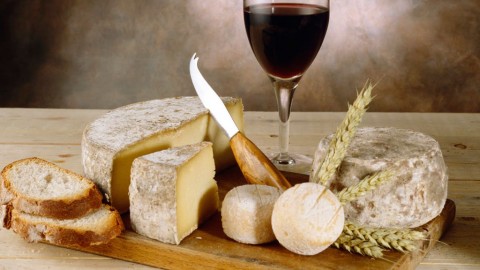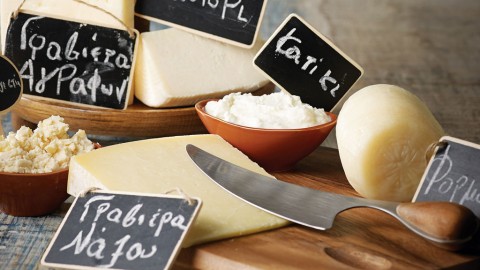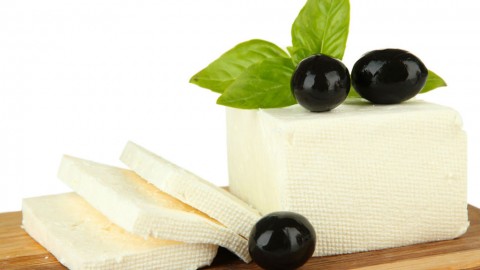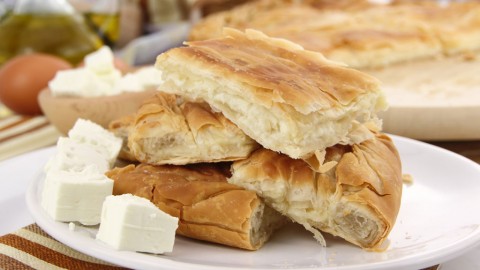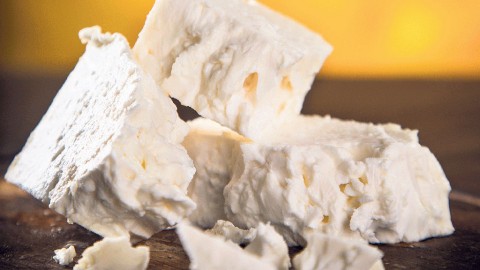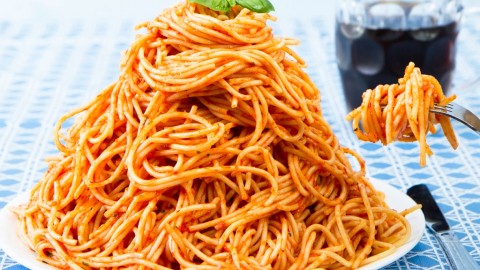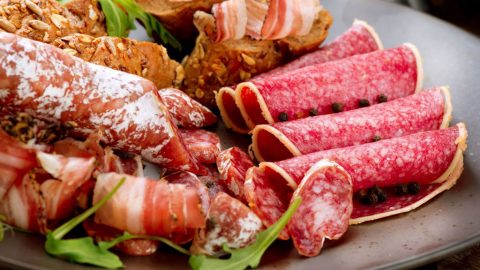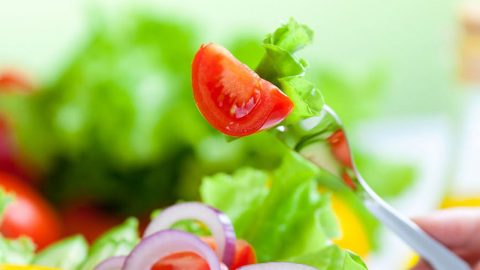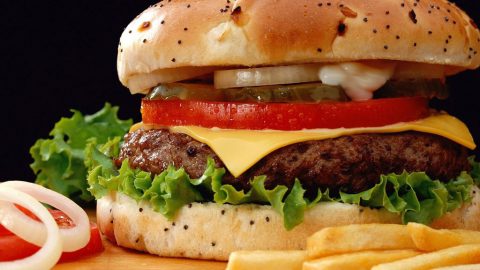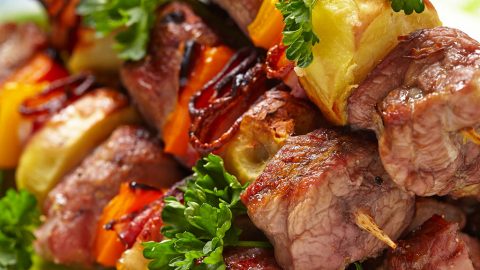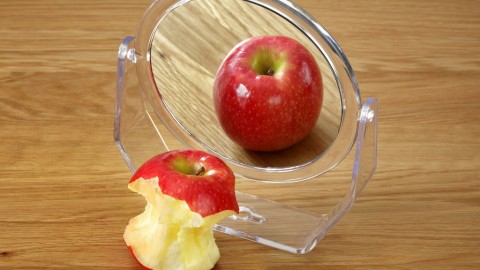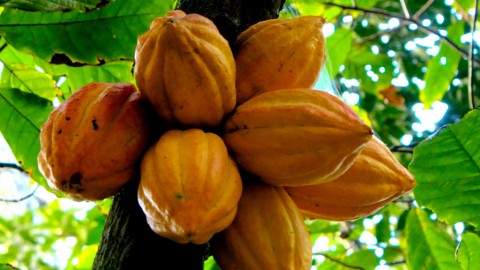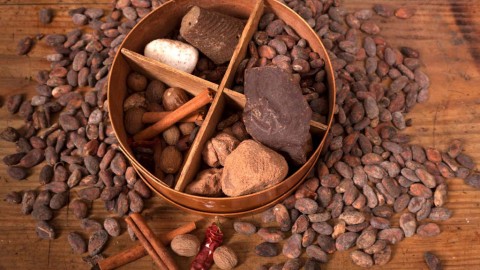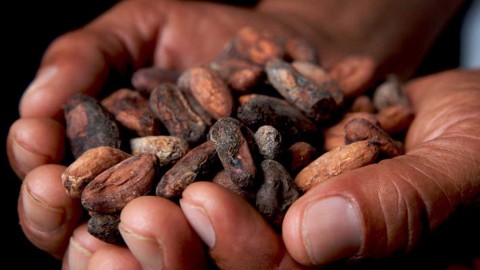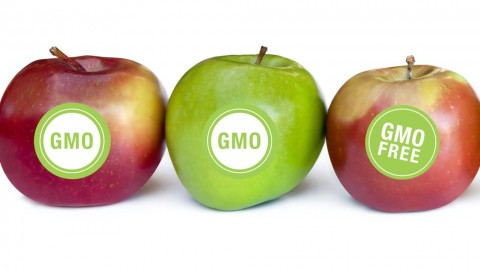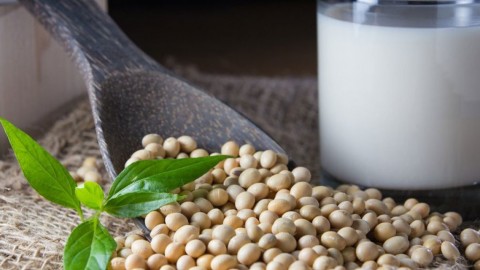Don’t get thrown off by the title! This vibrantly red little berry of Chinese origin is indeed called like this and, what’s more, this common name for it has prevailed internationally. I’m talking about the Chinese Goji berry; otherwise called Wolfberry. In traditional Chinese medicine it is called gou qi or kei tze; it belongs to the Solanaceae family and is produced by two closely related species of the family, Lycium barbarum and Lycium chinense.
Its nutritional value and beneficiary properties have been known in Tibet since 2800 b.C. It is worth noting that the first recordings of the plant’s usage can be found in an ancient book of Chinese medicine and pharmaceutics, written by the mythical emperor Shen Nong in approximately 200 b.C., that bears his name. The Shen Nong Ben Cao Jing, as the book is named, is the most ancient book on botanology and pharmaceutics in the history of humankind, where 365 different herbs and their uses have been recorded. The emperor himself chose to mention them not only because of their benefits for human health but also due to the fact that they had almost no side-effects. Actually, in this book, herbs and plants are categorized in three sections, depending on their therapeutic power and action. The happy berry is placed in the first group, which means that its ability to tone and promote longevity has been identified since antiquity.
In Western civilization, goji berry has been characterized as superfood and has worthily gained its place in our dietary habits; this happened relatively recently, due to the immediate access to information that the internet has provided – thus making goji widely known. Today, both types of the plant are cultivated all over the world and demand for them is great both for the nutritional as well as the therapeutic properties of their fruit.
The secret of longevity
Indubitably, goji berry is one of the secrets of longevity among Asian people, since – among other similar instances – the fact that botanologist and martial arts instructor Li Qing Yuen consumed it on a daily basis is considered the reason he managed to die 256 years old. Moreover, it has been recorded that, in several regions of Asia, where goji berry has been cultivated for centuries (ergo, has been consumed for ages), people are in excellent health and, in extent, tend to reach particularly old ages. According to publications of two journals (Journal of Chinese Herbal Medicine and China Pharmacology and Toxicity), the phenomenon of Li Qing Yuen is, quite possibly, a well-founded scientific case of extreme longevity that has been studied; the second one is the case of a French woman called Jeanne Calment, who lived to be 122 years and 164 days old. However, in order to be exact and precise, we should note that the case of Li Qing Yuen’s longevity is still many scientific facts short in order to form absolutely safe and well-founded conclusions that could explain the causes which allowed him to live healthy and in good condition to such an extremely advanced age.
The consumption of goji berry
Save for the regions where it is systematically produced, we will rarely find goji berry in its fresh form; perhaps in a very small package that permits good ventilation – since the fruit is very delicate and its ingredients cannot remain intact for many days. Thus it is normally consumed in its dry form. It has a subtle sweet aftertaste but does not possess any particular or characteristic aroma; based on the habits of Westerners regarding taste, this makes it gastronomically less “interesting”. The Chinese have a habit of adding the berry to their soup or tea (most often along with chrysanthemum or jasmine buds); they also produce a red wine from it, which they label as “therapeutic”. The plant’s leaves can be consumed as a vegetable – they also have particularly high nutritious value.
The active ingredients of goji berry
The most difficult part of an article concerning pharmaceutic- therapeutic or nutritional issues that is addressing a wider audience is the one containing terminology and action mechanisms. This happens because, on one hand, it is inevitable to mention the relevant scientific terminology in order to provide valid proof for whatever is being communicated; but, on the other hand, the reader is bombarded with all this information while not possessing any prior specialized knowledge on the subject. This article will move in the same direction as all previous ones: by providing an eloquent and, simultaneously, well-founded report about the ingredients of goji berry and its action mechanisms on the human organism; without, if possible, lingering on terminology and information that requires specialized knowledge in order to be understood.
According to the scientific bibliography of the past 20 years, goji berry contains a vast variety of bio-active ingredients: the most basic ones being carotenoid zeaxanthin, the precursory form of vitamin C (in scientific terms, 2-0-(b-D-glucopyranosyl ascorbic acid), and a series of glucoproteins, glucopeptides, peptidoglycans, glycolipids, glycosides and lipopolysaccharites. Of these, the most important ones (whose action has been extensively researched) are the ones named AGP (an acronym for ArabinoGalactan Proteins), which derive from the union of the polysaccharide arabinogalactan with certain peptides and proteins; they seem to play an important part in human metabolism and in the adjustment of the immune system’s normal function.
Moreover, it has been verified that the goji fruit contains 18 different amino-acids (8 of which are considered necessary for life itself), 21 minerals, a complex of vitamin B, iron, vitamin E, phytosterols with anti-inflammatory action (the most important one is beta-sitosterol), as well as useful fatty acids (such as omega-6 and linoleic acid).
The effect of goji berry in the human organism
As mentioned before, the happy berry is especially rich in a category of glucoproteins, called AGP. The properties and the action of AGP have been extensively examined by modern researchers. Therefore, today we have scientifically based knowledge of the fact that AGP (and, in extent, the consumption of goji berry, their primary source) reinforce our immune system. This particular action of AGP is due to the fact that they intercept the binding of viruses and bacteria to our cellular membranes in certain tissues (most importantly, that of the liver) thus stopping further infection. At the same time, thanks to the particular structure of their molecules, AGP seem to have probiotic properties as well, reinforcing the correct function of our peptic system (Scientific publications: Redgwell & Fischer 2005; Beuth et al. 1987; Hagman et al. 1991).
Until the mid-80s, more than 200 different studies had been published about the biochemistry of goji berry and the activity of its ingredients; of these 200 studies, more than 50 focused specifically either on the action of the fruit’s polysaccharites or on the glucoproteins called AGP. However, we should mention that, in all these studies, the basis of research used were the fruit’s bioactive substances in the form of a solution, instead of its pure isolated form – whatever this means for the scientific soundness of the results. In any event, the majority of these studies reached the conclusion that the above mentioned ingredients of goji berry exhibit immuno-adjusting, anti-cancer and anti-oxidant activity.
The contribution of goji berry to the adjustment of the immune system’s correct function and to the prevention of certain types of cancer
Including goji berry in our everyday diet reinforces the activity and correct function of our immune system. According to published scientific findings, it seems that the polysaccharites that the happy berry contains have the ability to stimulate the T-lymphocytes of our immune system into producing a substance called interleukin-2 (IL-2). (Scientific publication: Geng et al. 1989)
A very simplified and brief note: T-lymphocytes are a special category of very important cells of our immune system, involved in the process of our organism’s immunity against pathogenic micro-organisms (and more). The function of these cells is to identify the “pathogenic intruder” (otherwise named antigen) in the organism and, subsequently, to help in its “elimination”. They do this either by producing certain substances called cytokines (in this case, we are talking about assistant T-cells – a sub-category of T-lymphocytes) or by producing certain toxic, for the pathogenic bacteria, granules (in which case, we have cytotoxic T-cells).
In turn, interleukins are a certain type of cytosine produced by T-lymphocytes. Interleukin-2 is the most studied cytosine to this day and its role is to stimulate other cells of the immune system, which, potentially, can neutralize even existing cancerous cells in the human organism. Actually, today, the administering of interleukins has been approved as a treatment for metastatic kidney cancer and metastatic melanoma; there is also ongoing research for its potential use to treat other forms of cancer.
In a clinical trial conducted in 75 cancer patients, scientists administered to the patients their usual oral medication (per os) combined with polysaccharites and AGPs that had been isolated from goji berry. The results of this particular research showed that this combination treatment contributed to the greater reduction of cancer mass in comparison to that achieved in the absence of goji berry polysaccharites. (Published research: Gau, Yang & Du 1994).
In conclusion, the systematic consumption of goji berry can contribute to the prevention of certain types of cancer. In case the person is already afflicted, goji berry could potentially become a healthy dietary habit, which can (in a subsidiary manner) contribute to the treatment of the disease, always in combination to the primary medication administered. In any case, the most scientifically correct and therapeutically safe course of action is for patients to always seek advice from their doctors.
The antioxidant effect of goji berry
The happy berry is a fruit with significant nutritional value as well as antioxidant action, since it is very rich in beta-carotene; also it contains carotenoids, polyphenols, vitamin C in its precursory form, vitamin E, and various other minerals, such as selenium and germanium. Actually, the antioxidant action of the fruit’s polysaccharites and glucoproteins has been confirmed in numerous lab and clinical trials. (Scientific publication: Li, Peng & Wang 2007)
In specific, studies conducted on cells as well as on guinea pigs showed that goji polysaccharites:
- Can reduce oxidative stress and the destruction of genetic material caused by the action of free radicals. (Scientific publications: Li 2007; Li & Zhou 2007; Wu et al. 2006)
- Reduce lipid redox from free radicals, in case diet contains high fat percentages. (Scientific publication: Ma et al. 2009)
- Protect the muscular system from oxidative stress, in case of intense exercise. (Scientific publication: Niu et al. 2008)
However, apart from the presence of polysaccharites and AGP glucoproteins, scientists have traced yet other ingredients in the goji fruit to exhibit antioxidant action: such as zeaxanthin and certain polyphenols. Actually, more recent studies claim that neither goji polysaccharites nor AGP could have the antioxidant effects they do without the presence and collaboration of the fruit’s polyphenols.
The systematic consumption of goji berry improves vision
The happy berry is particularly rich in carotenoids, something we can easily detect at first glance by observing its vibrant red color. The most basic carotenoids of goji berry are lutein and zeaxanthin. Both are naturally present in the macula of the retina and partake in the normal function of vision. To explain this better: the macula is found in the center of the eye’s retina and is responsible for the acute and detailed aspect of vision.
Lutein is the eye’s natural sunblock. It absorbs ultraviolet light, has antioxidant capacity and acts protectively against the harmful effects of free radicals, such as those causing macular degeneration. The latter is a condition that leads to the extensive reduction in visual ability. The condition is age-related, meaning that the possibility to be afflicted by it increases with age. To this day, there is no effective treatment for this condition; while already existing treatments are, based on statistics, both low in effectiveness and high in their risk of leading to unwanted side-effects. Therefore, science has turned its attention to goji berry in its effort to find a preventive drug and a treatment for the condition.
Zeaxanthin, on the other hand, is a carotenoid with similar antioxidant properties found in various fruits and vegetables; yet goji berry is the king of its natural source. The concentration of zeaxanthin occupies 88% of the sum of the berry’s carotenoids; ergo we can easily call goji “natural zeaxanthin pills”.
In traditional Chinese medicine, the consumption of goji berry has been associated with the improvement of vision for many centuries; yet there is scarce official research on the matter. This makes it rather difficult for us to know fully and with adequate documentation about the mechanisms through which the berry’s active ingredients interact with this particular sense.
The anti-diabetic properties of goji berry
The administration of goji berry to individuals suffering from diabetes has been recorded in traditional Chinese medicine for many centuries; moreover, today, there is a multitude of studies that, upon completion, proved the beneficiary properties of the berry to afflicted individuals – either administered on its own or in combination with other herbs. In brief, the results of some of these studies are the following:
- The systematic consumption of goji berry increases the hematocrit and the erythrocyte sedimentation rate in patients suffering from diabetes. (Scientific studies: Li, Pen & Zhang 1999; Liu et al. 1995; Li, Ma & Liu 2007)
- The extract of fresh goji berry has significant hypoglycemic action, increases the level of insulin in the blood and improves the operating of pancreatic cells that secrete insulin. (Scientific studies: Tan 2008; Tian & Wang 2005)
- Goji berry was able to lower the level of total cholesterol and of triglycerides in the blood of guinea pigs that had been artificially afflicted by diabetes. (Scientific study: Luo et al. 2004)
The beneficiary effect of goji berry to the cardio-vascular system
Since the previous decade, science has confirmed that the consumption of goji berry, be it in the form of juice or extract or fruit, protects the cardio-vascular system from various malfunctions. Actually, the fruit’s action mechanisms are known to us, yet their extensive report requires specialized knowledge of pharmacology and physiology. The results of these studies show that goji berry can contribute to the prevention of cardio-vascular diseases by reducing oxidized cholesterol in the blood. The oxidation of cholesterol, as a direct result of the effect of free radicals on it, is the most basic factor for the increase of arterial pressure, which can potentially lead to further damage in the cardio-vascular system. (Scientific publications: Thomas, Zhang & Victor 2001; Augustyniak et al. 2005; Gross, Zhang & Zhang 2006; Toyoda – Ono et al. 2004; Breithaupt et al. 2004; Cheng et al. 2005; Benzie et al. 2006)
Goji berry increases male libido
An old Chinese proverb advises “men who travel not to eat goji berry while they are away from their wives because they will never manage to remain faithful to them”. In traditional Chinese and Tibetan medicine, goji berry is considered a very powerful tonic for men and has been used for centuries to treat problems of erectile dysfunction, sub-fertility, infertility, premature ejaculation as well as for muscle strengthening.
Modern official studies seem to confirm Chinese tradition since the consumption of the berry is directly implicated in the increase of androgen levels (male hormones) and, in particular, of the hormone testosterone; thus increasing libido as well as contributing to the treatment of the above mentioned conditions. (Scientific publications: Wang et al. 2006; Wang et al. 2002; Luo et al. 2006; Sohn et al. 2008)
The effect of goji berry on the nervous system – reinforcement of memory and mental clarity
In the past, the happy berry was not recorded as a tonic for mental clarity and memory in aged individuals; actually, this was only because, in the beginning of the 20th century, life expectancy did not exceed 55 years. More recent researches, however, suggest otherwise on the matter and have presented data that confirms the ability of goji berry to act beneficially on the nervous system, as well as on memory and mental clarity.
Goji berry extract seems to be beneficial in the prevention of Alzheimer’s disease. This disease is connected with short-term memory loss; and goji berry acts in a preventative manner regarding its emergence because it protects us from the neurotoxicity of a certain peptide, amyloid beta, which develops in our tissues with the passing of time and whose presence contributes to the appearance of Alzheimer’s. (Scientific publications: Zhang & Zhang 2009; Anfuso, Lupo & Alberghina 1999; Ho et al. 2007; Yu et al. 2007 & 2005)
In experiments conducted on pregnant rats, scientists administered a concoction of goji berry extract and milk; they were then able to ascertain that the presence of the berry’s polysaccharites drastically lowered pregnancy stress – and, later on, of labor. The explanation they provided with further experiments was that the polysaccharites’ presence drastically lowered the levels of free radicals in neural tissues. These research findings are very promising regarding the prevention of neuro-degenerative diseases in aging people, as well as the prevention of reduced brain development in embryos. (Scientific publication: Feng et al. 2010)
The effect of goji berry consumption on the pituitary gland and on human growth hormone (GH)
Including goji berry in our dietary habits has a beneficent effect on the good function of the pituitary gland, as well as to the production of human growth hormone (GH). This is – mostly – due to the fact that goji berry is an excellent source of potassium and of two important amino-acids, L-glutamine and L-arginine, which are involved in the secretion of growth hormone. Exactly what the pituitary gland and GH is can, in itself, become the topic of extensive articles – either scientific or more simplistic. In this article, we are going to provide a brief (and without detailed analysis) explanation, in order for the properties and nutritional value of goji berry, as well as how (in extent) it is involved with anti-aging, well-being and longevity, to become understood.
The pituitary gland is a gland at the base of the brain, responsible for the production of certain basic and important hormones, such as growth hormone (GH), prolactin (PRL), adrenocorticotropic hormone (ACHT), luteinizing hormone (LH), follicle-stimulating hormone (FSH) and thyroid-stimulating hormone (TSH).
Human growth hormone (also called somatotropin) is a hormone released by the pituitary gland in certain circumstances (such as during intense exercise when blood sugar level is low, under stressful conditions, etc.); the greatest amounts are released during sleep – ergo the perception of traditional medicine stating that “sleep nurtures” by helping small children grow. In order for growth hormone to be normally secreted, the presence of amino-acid L-arginine and zinc is necessary; therefore, the foods providing us with these two ingredients are very important for our health, since human growth hormone is involved in some very basic functions of the organism. In brief, growth hormone:
- Is the “natural anabolic” produced in the organism. It increases muscle mass, reduces body fat; it also influences the connective cartilages of the bones and promotes their increase in length.
- Induces protein composition in a multitude of tissues, facilitating the entrance of amino-acids in the cells. In effect, this means that, without somatotropin, the body would not be able to benefit from any amount of protein the diet included; and, since the body would not benefit from it, the protein would be discarded.
- Favors the breakup of fat and the production of energy.
- Has hyperglycemic action, supplying tissues with glucose – most importantly, the brain, whose function without glucose is not feasible.
- Reinforces the immune system.
- Reduces cholesterol.
- Sharpens vision.
- Contributes to tissue rejuvenation and trauma healing. Cell rejuvenation is a process that takes place during deep sleep and has been attributed to the presence of somatotropin.
- Actively partakes in the composition of collagen, ergo the fact that it has been named the “anti-ageing hormone”.
Understanding the normal functions of the human organism, we can easily deduct that – apart from the beneficent effect of goji berry that this article is examining – an overall “careful” and healthy diet is the best medicine for preventing disease in the human body.
The effect of goji berry on the gastro-intestinal system
According to the Journal of Alternative and Complementary Medicine, both the berry extract and the consumption of its fruit (in fresh or dried form) help maintain the intestine’s normal function and the digestive process. Therefore, it has been proved that goji berry acts preventatively against the occurrence of ulcers and irritable bowel syndrome, helps treat indigestion and constipation, while it also plays an important part in eliminating non-alcoholic fatty liver disease. The latter condition is the result of over-consuming foods high in saturated fats combined with obesity, which leads to the accumulation of fat in the liver. In extent, this can lead to serious damage in liver function later on. Of the people suffering from this condition, one in five will develop steatohepatitis and cirrhosis of the liver in the future. Moreover, since goji berry increases mobility in the gastro-intestinal tube, it has been used as complementary medication in the treatment of atrophic gastritis and in cases of weakening of the digestive abilities, a condition owed precisely to reduced intestinal mobility.
Overall, there have been no significant side-effects form the systematic consumption of the happy berry recorded. However, its consumption is contra-indicated in cases of diarrhoea and spleen inefficiency.
Conclusions
The happy berry possesses beneficent properties for our health, which have been recorded in traditional Chinese and Tibetan medicine for many centuries. Modern medical and pharmaceutical research has been able to confirm Asian traditional recordings; also to complement our field of knowledge by determining the substances responsible for the berry’s activity. Consequently, it has been proved that including goji berry in our diet can both act preventively against the occurrence of certain diseases and help in treating others, as a subsidiary treatment – always combined with the medication prescribed by our doctor.
Christina Bakopoulou
Pharmacist
Scientific and research bibliography
- Anfuso C.D, Lupo G, Alberghina M. Amyloid beta but not bradykinin induces phosphatidylcholine hydrolysis in immortalized rat brain endothelial cells. Neurosci Lett. 1999; 271: 151–4. (PubMed)
- Augustyniak R.A, Thomas G.D, Victor R.G, Zhang W. Nitric oxide pathway as new drug targets for refractory hypertension. Curr Pharm Des. 2005; 11: 3307–15. (PubMed)
- Beatty S, Murray I.J, Henson D.B, Carden D, Koh H, Boulton M.E. Macular pigment and risk for age-related macular degeneration in subjects from a Northern European population. Invest Ophthalmol Vis Sci. 2001; 42: 439–46. (PubMed)
- Benzie I.F.F, Chung W.Y, Wang J, Richelle M, Bucheli P. Enhanced bioavailability of zeaxanthin in a milk-based formulation of wolfberry (Gou Qi Zi; Fructus barbarum L.). Brit J Nut. 2006; 96: 154–60. (PubMed)
- Amagase H, Nance D.M. A randomized, double-blind, placebo-controlled, clinical study of the general effects of a standardized Lycium barbarum (goji) juice, GoChi. J Altern Complement Med. 2008; 14: 403–12. (PubMed)
- Amagase H, Sun B, Borek C. Lycium barbarum (goji) juice improves in vivo antioxidant biomarkers in serum of healthy adults. Nutr Res. 2009; 29: 19–25. (PubMed)
- Chang R.C.C, So K.F. Use of anti-aging herbal medicine, Lycium barbarum, against aging-associated diseases. What do we know so far? Cell Molec Neurobiol. 2008; 28: 643–52. (PubMed)
- Bai S. Research on Ningxia Wolfberry (Lycium barbarum) 1 and 2. Yinchuan, Ningxia, China: Ningxia People’s Publishing House. 1998. Banchereau J, Steinman R.M. Dendritic cells and the control of immunity. Nature. 1998; 392: 245–52. (PubMed)
- Bernstein P.S, Zhao D.Y, Wintch S.W, Ermakov I.V, McClane R.W, Gellermann W. Resonance Raman measurement of macular carotenoids in normal subjects and in age-related macular degeneration patients. 2002; 109: 1780–87. (PMC free article – PubMed)
- Borel P, Grolier P, Armand M, editors. Carotenoids in biological emulsions: solubility, surface-to-core distribution, and release from lipid droplets. Lipid Res. 1996; 37: 250–261. (PubMed)
- Beuth J, Ko H.L, Oette K, Pulverer G. Inhibition of liver metastasis in mice blocking hepatocyte lectins with arabinogalactan infusions and D-galactose. J Cancer Res Clin Oncol. 1987; 113: 51–5. (PubMed)
- Bone R.A, Landrum J.T, Dixon Z, Chen Y, Llerena C.M. Lutein and zeaxanthin in the eyes, serum and diet of human subjects. Experiment Eye Res. 2000; 71: 239–45. (PubMed)
- Bone R.A, Landrum J.T, Guerra L.H, Ruiz C.A. Lutein and zeaxanthin dietary supplements raise macular pigment density and serum concentrations of these carotenoids in humans. J Nutr. 2003; 133: 992–8. (PubMed)
- Chen Z, Kwong Huat Tan B, Chan S.H. Activation of T-lymphocytes by polysaccharide-protein complex from Lycium barbarum L. Int Immunopharmacol. 2008; 8: 1663–71. (PubMed)
- Cao G, Yang W, Du P. Observation of the effects of LAK/IL-2 therapy combining with Lycium barbarium polysaccharides in the treatment of 75 cancer patients. Chin J Oncol. 1994; 16: 428–31. (PubMed)
- Breithaupt D.E, Weller P, Wolters M, Hahn A. Comparison of plasma responses human subjects after the ingestion of 3R, 3R– -zeaxanthin dipalmitate from wolfberry (Lycium barbarum) and non-esterified 3R,3R’ – zeaxanthin using chiral high-performance liquid chromatography. Brit J Nutr. 2004; 91: 707–13. (PubMed)
- During A, Dawson H.D, Harrison E.H. Carotenoid transport in decreased and expression of the lipid transporters SR-BI, NPC1L1, and ABCA1 is downregulated in Caco-2 cells treated with Ezetimibe. J Nutr. 2005; 135: 2305–12. (PubMed)
- Carpentier S, Knaus M, Suh M. Associations between lutein, zeaxanthin, and age-related macular degeneration: An overview. Crit Rev Food Sci Nutr. 2009; 49: 313–26. (PubMed)
- Huang L.J, Lin Y, Tian G.Y, Ji G.Z. Isolation, purification and physico-chemical properties of immuno-active constituents from the fruit of Lycium barbarum L. Acta Pharma Sinica. 1998; 33: 512–6. (PubMed)
- Gross P.M, Zhang X, Zhang R. Wolfberry: Nature’s Bounty of Nutrition & Health. Charleston, SC: Booksurge Publishing. 2006.
- Chao S, Schreuder M, Young G, Nakaoka K, Moyes L, Oberg C. Pre-clinical study: Antioxidant levels and immune-modulatory effects of wolfberry juice and other juice mixtures in mice. 2004; 7: 2–8.
- Geng C.S, Xing S.T, Zhou J.H, Chu B.M. Enhancing effect of Lycium barbarum polysaccharides on the interleukin-2-activity in mice. Chin J Pharmacol Toxicol. 1989; 3: 175–9.
- D’Adamo P. Larch arabinogalactan is a novel immune modulator. J Naturopath Med. 1996; 4: 32–9.
- Cheng C.Y, Chung W.Y, Szeto Y.T, Benzie I.F.F. Fasting plasma zeaxanthin response to Fructus barbarum L. (wolfberry; Kei Tze) in a food-based human supplementation trial. Brit J Nutr. 2005; 93: 123–30. (PubMed)
- Li H.Y, Peng L, Wang L. Comparison of trace elements and total flavone content in Chinese wolf-berry in different regions. Stud Trace Ele Health. 2007; 24: 14–6.
- Cheng J, Lee P, Li J, Dennehy C.E, Tsourounis C. Use of Chinese herbal products in Oakland and San Francisco Chinatowns. Am J Health-Syst Pharm. 2004; 61: 688–94. (PubMed)
- Chitchumroonchokchai C, Failla M.L. Hydrolysis of zeaxanthin esters by carboxyl ester lipase during digestion facilitates micellarization and uptake of the xanthophyll by Caco-2 human intestinal cells. J Nutr. 2006; 136: 588–94. (PubMed)
- Deng H.B, Cui D.P, Jiang J.M, Cai N.S, Li D.D. Inhibiting effects of Achyranthes bidentata polysaccharide and Lycium barbarum polysaccharide on nonenzyme glycation in D-galactose induced mouse aging model. Biomed Environ Sci. 2003; 16: 267–75. (PubMed)
- Gale C.R, Hall N.F, Phillips D.I.W, Martyn C.N. Lutein and zeaxanthin status and risk of age-related macular degeneration. Invest Ophthalmol Vis Sci. 2003; 44: 2461–65. (PubMed)
- Du G, Liu L, Fang J. Experimental study on the enhancement of murine splenic lymphocyte proliferation by Lycium barbarum glycopeptide. J Huazhong Univ Sci Technol Med Sci. 2004; 24: 518–21. (PubMed)
- Friedman D.S, O’Colmain B.J, MuÓoz B, editors. et al. Prevalence of age-related macular degeneration in the United States. Arch Ophthalmol. 2004; 122: 564–72. (PubMed)
- El-Sohemy A, Baylin A, Kabagambe E, Ascherio A, Spiegelman D, Campos H. Individual carotenoid concentrations in adipose tissue and plasma as biomarkers of dietary intake. Am J Clin Nutr. 2002; 76: 172–9. (PubMed)
- Gan L, Zhang S.H, Yang X.L, Xu H.B. Immunomodulation and antitumor activity by a polysaccharide-protein complex from Lycium barbarum. Internat Immunopharmacol. 2004; 4: 563–9. (PubMed)
- Duan C.L, Qiao S.Y, Wang N.L, Zhao Y.M, Qi C.H, Yao X.S. Studies on the active polysaccharides from Lycium barbarum L. Yaoxue Xuebao. 2001; 36: 196–9. (PubMed)
- Feng Z, Jia H, Li X, editors. A milk-based wolfberry preparation prevents prenatal stress-induced cognitive impairment of offspring rats, and inhibits oxidative damage and mitochondrial dysfunction in vitro. Neurochem Res.2010; 35: 702–11. (PubMed)
- Hartmann D, Thürmann P.A, Spitzer V, Schalch W, Manner B, Cohn W. Plasma kinetics of zeaxanthin and 3′- dehydro-lutein after multiple oral doses of synthetic zeaxanthin. Am J Clin Nutr. 2004; 7: 410–7. (PubMed)
- Gan L, Zhang S.H, Liu Q, Xu H.B. A polysaccharide-protein complex from Lycium barbarum regulates cytokine expression in human peripheral blood mononuclear cells. Eur J Pharmacol. 2003; 471: 217–22. (PubMed)
- Ho Y.S, Yu M.S, Lai C.S, So K.F, Yuen W.H, Chang R.C. Characterizing the neuroprotective effects of alkaline extract of Lycium barbarum on beta-amyloid peptide neurotoxicity. Brain Res. 2007; 1158: 123–34. (PubMed)
- Gau G.W, Yang W.G, Du P. Observation of the effects of Lycium barbarum polysaccharides (LBP) in combination with LAK/IL-2 therapy in the treatment of 75 cancer patients. Chin J Oncol. 1994; 16: 1190–7. (PubMed)
- Huang L.J, Tian G.Y, Zheng G. Structure elucidation of glycan of glycoconjugate LbGp3 isolated from the fruit of Lycium barbarum L. J Asian Nat Prod Res. 1999; 1: 259–67. (PubMed)
- Jermyn M.A, Yeow Y.M. A class of lectins present in the tissues of seed plants. Aust J Plant Physiol. 1975; 2: 501–31.
- Goldbohm R.A, Brants H.A.M, Hulshof K.F.A.M, Van den Brandt P. The contribution of various foods to intake of vitamin A and carotenoids in the Netherlands. Int J Vit Nutr Res. 1998; 68: 378–83. (PubMed)
- Huang C, Chen Q.L, Sun J.T, Yang W.B, Ma L.J, Wan X.D. Protective effect of Lycium bar-barum polysaccharide and its compound recipe on pancreatic islet function in rats with streptozotocin- induced diabetes mellitus. Chin J Clin Rehabilitat. 2006; 10: 173–5.
- Gong H, Shen P, Jin L, Xing C, Tang F. Therapeutic effects of Lycium barbarum polysaccharide (LBP) onirradiation or chemotherapy-induced myelo-suppressive mice. Cancer Biother Radiopharm. 2005; 20: 155–62. (PubMed)
- Granado F, Olmedilla B, Gil-Martinez E, Blanco I, Millan I, Rojas-Hidalgo E. Carotenoids, retinol and tocopherols in patients with insulin-dependent diabetes mellitus and their immediate relatives. Clin Sci. 1998; 94:1 89–95. (PubMed)
- Hagman B, Ryd W, Skomedal H. Arabinogalactan blockade of experimental metastases to liver by murine hepatoma. Invasion Metastasis. 1991; 11: 348–55. (PubMed)
- He Y.L, Ying Y, Xu Y.L, Su J.F, Luo H, Wang H.F. Effects of Lycium barbarum polysaccharide on tumor microenvironment T-lymphocyte subsets and dendritic cells in H22-bearing mice. Journal of Chinese Integrative Medicine. 2005; 3: 374–7. (PubMed)
- Lanzavecchia A, Sallusto F. Regulation of T-cell immunity by dendritic cells. 2001; 106: 263–6. (PubMed)
- Huang L.J, Tian G.Y, Qi C.H, Zhang Y.X. Structure elucidation and immunoactivity studies of glycan of glycoconjugate LbGp4 isolated from the fruit of Lycium barbarum L. Kao Teng Hsueh Hsiao Hua Heush Hsueh Pao. 2001; 22: 407–11. (PubMed)
- Li X.M, Ma Y.L, Liu X.J. Effect of the Lycium barbarum polysaccharides on age related oxidative stress in aged mice. J Ethnopharmacol. 2007; 111: 504–11. (PubMed)
- Inbaraj B.S, Lu H, Hung C.F, Wu W.B, Lin C.L, Chen B.H. Determination of carotenoids and their esters in fruits of Lycium barbarum L. by HPLC-DAD-APCI-MS. J Pharmaceut Biomed Anal. 2008; 47: 812–8. (PubMed)
- Li W, Dai S.Z, Ma W, Gao L. Effects of oral administration of Wolfberry on blood superoxide dismutase (SOD), hemoglobin (Hb) and lipid peroxide (LPO) levels in old people. Chin Trad Herb Drugs. 1991; 22: 251–68.
- Li X.M. Protective effect of Lycium barbarum polysaccharides on streptozotocin-induced oxidative stress in rats. Internat J Biol Macromolec. 2007; 40: 461–5. (PubMed)
- Li D.K, Zhang J. Influence of Yishen decoction on hemorheological indexes in patients with diabetes mellitus and diabetic nephropathy. J Clin Rehabil Tissue Eng Res. 2007; 11: 5854–6.
- Jia Y.X, Dong J.W, Wu X.X, Ma T.M, Shi A.Y. The effect of Lycium barbarum polysaccharide on vascular tension in two-kidney, one clip model of hypertension. Sheng Li Xue Bao. 1998; 50: 309–14. (PubMed)
- Jia W, Gao W.Y, Tang L. Anti-diabetic herbal drugs officially approved in China. Phytother Res. 2003; 17: 127–34. (PubMed)
- Jiang Y.D, Cao J, Dong Q.Z, Wang S.R. Experimental study of anti- atherosclerosis potency by lycium seed oil and its possible mechanism. Zhong Yao Cai. 2007; 30: 672–7. (PubMed)
- Landrum J.T, Bone R.A. Lutein, zeaxanthin, and the macular pigment. Arch Biochem Biophy. 2001; 385: 38–40. (PubMed)
- Leung I.Y.F, Tso M.O.M., Li W.W.Y, Lam T.T. Absorption and tissue distribution of zeaxanthin and lutein in rhesus monkeys after taking Fructus lycii (Qou Qi Zi) extract. Invest Ophthalmol Vis Sci. 2001; 42: 466–71. (PubMed)
- Li Z, Pen G, Zhang S. Composition and content of carotenoids in Fructus lycii. J Plant Resources Environm.1999; 8: 57–8. (China)
- Li X.L, Zhou A.G. Evaluation of the antioxidant effects of polysaccharides extracted from Lycium barbarum. Medicinal Chem Res.2007; 15: 471–82.
- Kaufman S.R. Developments in age-related macular degeneration, diagnosis and treatment. 2009; 64: 16–9. (PubMed)
- Lam K.W, But P. The content of zeaxanthin in Gou Qi Zi, a potential health benefit to improve visual acuity. Food Chem. 1999; 67: 173–6.
- Liu W.J, Liu H.L, Ji Y, Li Y.Y. The hypoglycemic effect of Jiangtang Huoxue capsule. Chin J Exper Trad Med Formula. 1995; 3: 50–1.
- Li Y.J, Qi C.H, Zhao X.N, Cheng J.P, Wei C.H, Zhou W.X, Zhang Y.X. Effects of glyco-conjugate and its glycan isolated from Lycium barbarum L on macrophage function. Chin Pharmacol Bull. 2005; 21: 1304–8.
- Li Q, Zhang G.J, Feng R, Fu X.H, Mao J.C, Wang Y. Clinical research of diabetic retinopathy treated with Tang-an-kang. J Chengdu Univ Trad Chin Med. 1999; 1: 23–6.
- Liu C.Y, Tseng A. Chinese Herbal Medicine: Modern Applications of Traditional Formulas. Boca Raton, FL: CRC Press; 2005.
- Luo Q, Cai Y, Yan J, Sun M, Corke H. Hypoglycemic and hypolipidemic effects and antioxidant activity of fruit extracts from Lycium barbarum. Life Sci. 2004; 76: 137–49. (PubMed)
- Luo Q, Li Z, Huang X, Yan J, Cai Y.Z. Lycium barbarum polysaccharides: Protective effects against heat induced damage of rat testes and H2O2-induced DNA in mouse testicular cells and beneficial effect on sexual behaviour and reproductive function of hemi-castrated rats. Life Sci. 2006; 79: 613–21. (PubMed)
- Luo Q, Yan J, Li J, Zhang S. Effect of Lycium barbarum L. and its polysaccharides on decreasing serum lipids in rabbits. Acta Nutrimenta Sinica. 1997; 19: 415–7.
- Luo Q, Li J.W, Zhang S.H. Effect of Lycium barbarum polysaccharides-X on reducing blood glucose in diabetic rabbits. Chin J Trophology. 1997; 19: 173–7.
- Luo Q, Li Z.N, Yang M.L, Yan J, Cui X.Y, Jiang M. Effects of Lycium barbarum polysaccharides on human prostate carcinoma PC-3 cells and its anti-tumor effect. Acta Nutrimenta Sinica. 2008; 30: 78–81.
- Luo Q, Yan J, Li J, Zhang S. The comparative study on the anti-fatigue effects of crude and pure Lycium barbarum polysaccharides. Acta Nutrimenta Sinica. 1999; 21: 310–7.
- Luo Q, Yan J, Zhang S. Effects of pure and crude Lycium barbarum polysaccharides on immune-pharmacology. Zhong Yao Cai. 1999; 22: 246–9. (PubMed)
- Ma M, Lui G, Yu Z, Chen G, Zhang X. Effect of the Lycium barbarum polysaccharides administration on blood lipid metabolism and oxidative stress of mice fed high-fat diet in vivo. Food Chem. 2009; 113: 872–7.
- Mangione C.M, Gutierrez P.R, Lowe G, Orav E.J, Seddon J.M. Influence of age-related maculopathy on visual functioning and health-related quality of life. Am J Ophthalmol. 1999; 128: 45–53. (PubMed)
- Maeda M, Nakao M, Fukami H. 2-O-(β-D-Glucopyranosyl) ascorbic acid, process for its production, and foods and cosmetics containing compositions comprising it. 2003. Patent WO03/057707.
- Ma W.P, Ni Z.J, Li H, Chen M. Changes of the main carotenoid pigment contents during the drying processes of the different harvest stage fruits of Lycium barbarum L. Agric Sci. 2008; 7(3): 363–9.
- National Commission of Chinese Pharmacopoeia. 2005. Pharmacopoeia of People’s Republic of China. Chemical Industry Press, Beijing, China. English version.
- Niu A.J, Wu J.M, Yu D.H, Wang R. Protective effect of Lycium barbarum polysaccharides on oxidative damage in skelmuscle of exhaustive exercise rats. Internat J Biol Macromolec. 2008; 42: 447–9. (PubMed)
- Peng X.M, Huang L.J, Qi C.H, Zhang Y.K, Tian G.Y. Studies on chemistry and immuno- modulating mechanism of a glycoconjugate from Lycium barbarum L. Chinese J Chem. 2001; 19: 1190–7.
- Peng X.M, Qi C.H, Tian G.Y, Zhang Y.X. Physico-chemical properties and bioactivities of a glycoconjugate LbGp5B from Lycium barbarum L. Chin J Chem. 2001; 19: 842–6.
- Peng X.M, Wang Z.F, Tian G.Y. Physico-chemical properties and activity of glycoconjugate LbGp2 from Lycium barbarum L. Yaoxue Xuebao. 2001; 36: 601–2. (PubMed)
- Potterat O. Goji (Lycium barbarum and L. chinense): Phytochemistry, pharmacology and safety in the perspective of traditional uses and recent popularity. Planta Med. 2010; 76: 7–19. (PubMed)
- Pèrez-Gálvez A, Minguez-Mosquera M.I. Degradation, under non-oxygen-mediated auto-oxidation, of carotenoid profile present in paprika oleoresins with lipid substrates of different fatty acid composition. J Agric Food Chem. 2004; 52: 632–7. (PubMed)
- Potterat O, Hamburger M. Goji juice: A novel miraculous cure for longevity and well-being? A review of composition, pharmacology, health-related claims and benefits. Schweiz Zeitschr Ganzheits Medizin. 2008; 20: 399–405.
- Qi C.H, Huang L.J, Zhang Y.X, Zhao X.N, Tian G.Y, Ru X.B, Shen B.F. Chemical structure and immune-activity of the glycoconjugates and their glycan chains from the fruit of Lycium barbarum L. Chin J Pharmacol Toxicol. 2001; 15: 185–90.
- Qi C.H, Zhang Y.X, Zhao X.N, editors. et al. Immuno-activity of the crude polysaccharides from the fruit of Lycium barbarum L. Chin J Pharmacol Toxicol. 2001; 15: 180–4.
- Reboul E, Abou L, Mikail C, editors. et al. Lutein transport by Caco-2 TC-7 cells occurs partly by a facilitated process involving the scavenger receptor class B type (SR-BI). Biochem J. 2005; 15: 455–61. (PMC free article) (PubMed)
- Redgwell R.J, Fischer M. Dietary fibre as a versatile food component: An industrial perspective. Mol Nutr Food Res. 2005; 49: 421–535. (PubMed)
- Sohn D.W, Kim H.Y, Kim S.D, editors. et al. Elevation of intra-cavernous pressure and NO-cGMP activity by a new herbal formula in penile tissues of spontaneous hypertensive male rats. J Ethnopharmacol. 2008; 120: 176–80. (PubMed)
- Sommerburg O, Keunen J.E.E, Bird A.C, van Kuijk F.J.G.M. Fruits and vegetables that are sources for lutein and zeaxanthin: The macular pigment in human eyes. Brit J Ophthalmol. 1998; 82: 907–10. (PMC free article) (PubMed)
- Sesso H.D, Buring J.E, Christen W.G, editors. et al. Vitamin E and C in the prevention of cardiovascular disease in men: The Physicians’ Health Study II randomized controlled trial. 2008; 300: 2123–33. (PMC free article) (PubMed)
- Sun W.J. Therapeutic effect of Lycium barbarum polysaccharides in combination with irradiation and BCNU in brain G422 tumour-bearing mice. Chin J Clin Oncol. 1994; 21 930–2.
- Rink L, Cakman I, Kirchner H. Altered cytokine production in the elderly. Mech Ageing Dev. 1998; 102: 199–209. (PubMed)
- Sze S.C.W, Song J, Chang R.C.C, Zhang K.Y, Wong R.N.S, Tong Y. Research advances on the anti-aging profile of Fructus lycii: An ancient Chinese herbal medicine. J Comp Int Med. 2008; 5: 1–17.
- Tan S.M. Study on the hypoglycemic effect of wolfberry. J Southern Medical Univ. 2008; 28: 2103–4.
- Thomas G.D, Zhang W, Victor R.G. Nitric oxide deficiency as a cause of clinical hypertension: Promising new drug targets for refractory hypertension. 2001; 285: 2055–7. (PubMed)
- Thomè O.W. 1885. Flora von Deutschland, Osterreich und der Schweiz. Gera, Germany.
- Tian L.M, Wang M. The hypoglycemic effect and pancreatic tissue histomorphology study of wolfberry. Trad Chin Med J. 2005; 4:48–51.
- Toyoda-Ono Y, Maeda M, Nakao M, Yoshimura M, Sugiura-Tomimori N. F-analogue isolated from lycium fruit. J Agric Food Chem. 2004; 52: 2092–6. (Pukami H. 2-O-(β-D- Glucopyranosyl) ascorbic acid, a novel ascorbic acid ub Med)
- Tucker K.L, Chen H, Vogel S, Wilson P.W.F, Schaefer E.J, Lammi-Keefe C.J. Carotenoid intakes, assessed by dietary questionnaire, are associated with plasma carotenoid concentrations in an elderly population. J Nutr. 1999; 129: 438–45. (PubMed)
- Tyssandier V, Lyan B, Borel P. Main factors governing the transfer of carotenoids from emulsion lipid droplets to micelles. Biochimica et Biophysica Acta. 2001; 1533: 285–292. (PubMed)
- Van Holst G.J, Clarke A.E. Quantification of AGP in plant extracts by single radial gel diffusion. Anal Biochem. 1985; 148: 446–50. (PubMed)
- Wang J.K, Bertholet R, Watzke H, Ducret P, Bucheli P. Delivery of functional ingredients. 2005. Patent WO2005092121 A2.
- Wang Z.Y. Study on active component from the fruit of Lycium barbarum in different regions. Bullet Botan Res. 2003; 23: 337–9.
- Wang L, Dong J, Jiang L.Z, editors. et al. The effects of LBP-D, hypoglycemic agents, alone or in combination, on blood glucose and immune functions in alloxan-induced diabetes mice. J Yunnan Univ. 1999; 21: 186–88.(Natural Sciences Edition)
- Wang B.K, Xing S.T, Zhou J.H. Effect of Lycium barbarum polysaccharides on the immune responses of T, CTL and NK cells in normal and cyclophosphamide-treated mice. Chin J Pharmacol Toxicol. 1990; 4: 39–43.
- Weller P, Breithaupt D.E. Identification and quantification of zeaxanthin esters in plants using liquid chromatography-mass spectrometry. J Agric Food Chem. 2003; 51: 7044–9. (PubMed)
- Wu H, Guo H, Zhao R. Effect of Lycium barbarum polysaccharide on the improvement of antioxi-dantability and DNA damage in NIDDM rats. Yakugaku Zasshi. 2006; 126: 365–71. (PubMed)
- Wang Y, Zhao H, Sheng X, Gambino P.E, Costello B, Bojanowski K. Protective effect of Fructus lycii polysaccharides against time and hyperthermia-induced damage in cultured seminiferous epithelium. J Ethnopharmacol. 2002; 82: 169–75. (PubMed)
- Wu Z.Y, Raven P.H. Flora of China. 17. St. Louis: Science Press, Beijing, and Missouri Botanical Garden Press; 1994. 2005.
- Wysong A, Lee P, Sloan F. Longitudinal incidence of adverse outcomes of age-related macular degeneration. Arch Ophthalmol.2009; 127: 320–7. (PMC free article) (PubMed)
- Xin Y.F, Zhou G.L, Deng Z.Y, editors. et al. Protective effect of Lycium barbarum on doxorubicin-induced cardiotoxicity. Phytother Res. 2007; 21: 1020–4. (PubMed)
- Xu S.L, Huang J, Tian G.Y. Effects of LbGp on the intracellular free calcium concentration of cardiomyocytes induced by hypoxia and KCl. Zhongguo Zhong Yao Za Zhi. 2005; 30: 534–8. (PubMed)
- Yin G, Dang Y. Optimisation of extraction technology of the Lycium barbarum polysaccharides by Box-Behnken statistical design. Carbohydr Polymers. 2008; 44: 603–10.
- Yeum K.J, Booth S.L, Sadowski J.A, editors. et al. Human plasma carotenoid response to the ingestion of controlled diets high in fruits and vegetables. Am J Clin Nutr. 1996; 64: 594–602. (PubMed)
- Yu M.S, Lai C.S, Ho Y.S, editors. Characterization of the effects of anti-aging medicine Fructus lycii on beta-amyloid peptide neurotoxicity. Int J Mol Med. 2007; 20: 261–8. (PubMed)
- Yu M.S, Leung S.K, Lai S.W, editors. et al. Neuroprotective effects of anti-aging oriental medicine Lycium barbarum against beta-amyloid peptide neurotoxicity. Exp Gerontol. 2005; 40: 716–27. (PubMed)
- Yu D.H, Wu J.M, Niu A.J. Health promoting effect of LBP and healthy Qigong exercise on physiological functions in old subjects. Carbohydr Polym. 2009; 75: 312–6.
- Yuan L.G, Deng H.B, Chen L.H, Li D.D, He Q.Y. Reversal of apoptotic resistance by Lycium barbarum glycopeptide 3 in aged T-cells. Biomed Environ Sci. 2008; 21: 212–7. (PubMed)
- Zhang M, Chen H. Effects of a glycoconjugate from Lycium barbarum on body composition in growing mice. J Sci Food Agric. 2006; 86: 932–6.
- Zhang M, Chen H, Huang J, Zhong L, Zhu C, Zhang S. Effect of Lycium barbarum polysaccharide on human heptoma QGY7703 cells: Inhibition of proliferation and induction of apoptosis. Life Sci. 2005; 76: 2115–24. (PubMed)
- Zhang M, Zhang S.H. Study on structure of Lycium barbarum L. polysaccharide. Food Res Devel. 2007; 28: 74–7.
- Zhang G.Q, Zhang W. Heart rate, lifespan, and mortality risk. Ageing Res. 2009; 8: 52–60. (PubMed)
- Pharmacological study on water extract of wolfberry. In: Zhao C, editor; Bai S, editor. In Research on Ningxia Wolfberry (Lycium barbarum) 1. Ningxia People’s Publishing House; Yinchuan, China: 1998. p. 604.
- Zhao Z. An Illustrated Chinese Materia Medica in Hong Kong. School of Chinese Medicine, Hong Kong Baptist University, Chung Hwa Book Co. Ltd; Hong Kong, China: 2004. p. 127.
- Zhao H, Alexeev A, Chang E, Greenburg G, Bojanowski K. Lycium barbarum glycoconjugates: Effect on human skin and cultured dermal fibroblasts. Phytomedicine (Jena) 2005; 12: 131–7. (PubMed)
- Zhao R, Li Q, Xiao B. Effect of Lycium barbarum polysaccharide on the improvement of insulin resistance in NIDDM rats. Yakugaku Zasshi. 2005; 125: 981–8. (PubMed)
- Zhao W, Swanson S.A, Ye J, editors. et al. Reactive oxygen species impair sympathetic vaso-regulation in skelmuscle in angiotensin II-dependent hypertension. 2006; 48: 637–43. (PubMed)
- Zhou X.L, Sun P.N, Bucheli P, Huang T.H, Wang D.F. FT-IR methodology for quality control of arabinogalactan protein (AGP) extracted from green tea (Camellia sinensis). J Agric Food Chem. 2009; 57: 5121–8. (PubMed)
- Zhou L, Leung I, Tso M.O.M, Lam K.W. The identification of dipalmityl zeaxanthin as the major carotenoid in Gou Qi Zi by high pressure liquid chromatography and mass spectrometry. J Ocular Pharmacol Therapeut. 1999; 15: 557–65. (PubMed)
- Zhu J, Zhao L.H, Zhao X.P, Chen Z. Lycium barbarum polysaccharides regulate phenotypic and functional maturation of murine dendritic cells. Cell Biol Int. 2007; 31: 615–9. (PubMed)
- Zhu J, Zhao L.H, Chen Z. Stimulation by Lycium barbarum polysaccharides of the maturation of dendritic cells in murine bone marrow. J Zhejiang University Medical Sciences. 2006; 35: 648–52. (PubMed)



